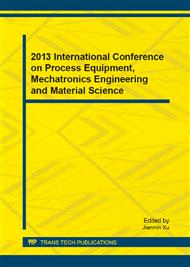p.595
p.600
p.604
p.608
p.612
p.617
p.622
p.626
p.631
Improving Pre-Stack Seismic Data Resolution Based on Inverse Q Filter
Abstract:
The precision of seismic reflection data does not fulfil to explore private and complex structure oil-gas pools. So we need to improve the resolution of seismic data. To achieve this, we used the inverse Q filter methods to improve the resolution for the seismic data. The results for processing the pre-stack seismic data indicated that the inverse Q filter method can improve peak frequency and frequency bandwidth. Low and middle-high frequency components in those results are reasonable, and its signal/noise ratios are obviously larger than that for other methods in middle-high frequency. Moreover, the results using various Q values indicated that the peak frequency is little added and the frequency bandwidth is expanded when Q value is reducing, but the signal/noise ratio is reducing. Moreover, the improving of the signal/noise ratio is very small when Q value is larger than 200.0, namely addition for Q value only gains reducing of the peak frequency and the bandwidth.
Info:
Periodical:
Pages:
617-621
Citation:
Online since:
July 2013
Authors:
Price:
Сopyright:
© 2013 Trans Tech Publications Ltd. All Rights Reserved
Share:
Citation:


